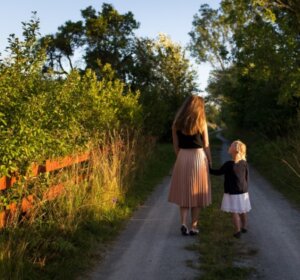22 Sep Explaining Cremation to Children

Through my experience helping families at the SUDC Foundation as its Family Services Coordinator, I have supported many as they encounter a myriad of challenges after the loss of a child. For families with surviving siblings and other young relatives, questions about the death of their loved one are innumerable at times. Some of their questions involve memorial rituals, and these can include cremation. Families have asked for my advice on how to explain cremation to children, which can be a difficult topic to approach.
To address this need, and share our knowledge with the general public, we examined available research and resources to compile a list of helpful tips for adults when explaining cremation to children:
Make sure you understand the process. Cremation can be a somber topic, especially in the aftermath of loss. For a grieving parent, or adult relative going through loss, it is understandable that some may not understand the process themselves. The Center for Loss and Life Transition 1 offers a good overview as well as some child-appropriate cremation information to review before speaking to a child about cremation.
Use specific language. It’s okay to be caught off guard, and not know what to say. In those moments, take a deep breath and collect your thoughts. Use concrete language when speaking about death in general as euphemisms such as “they’re sleeping” can lead to fear and confusion. Joy Johnson, the co-founder of the Centering Corporation, a bereavement resource center, writes, “Cremation can be explained by describing a special room. You could say, for example, ‘There is a room, unlike any room we have in our house. There is special fire in that room, not like the fire in our fireplace. This is a very, very hot fire, and since our bodies are more than 90 percent water, the body really evaporates. It’s like an ice cream cone melting from the inside out. What is left is turned into a very fine, soft ash.’”2 For those with a religious or spiritual background, stay consistent with your message and try not to introduce new philosophies.3 Younger children often see death as a temporary condition, so burning can possibly be misunderstood as something that will prevent their loved one from returning to life. It’s important to be very clear to them that their loved one can no longer feel the heat of the fire or pain from a burn. No matter how you explain it, choose language that is appropriate for the individual child’s age, personality and stage of development. The more comfortable you are discussing it, the more likely the child will be with the topic as well. Take time choosing your words, practice what you might say if you feel it might be difficult – use a friend, partner or counselor as a sounding board.
Be honest. Children often have a remarkable ability to tell when someone is not being truthful with them. Try to avoid withholding information or using euphemisms. Children can only cope with what they are presented with and will often clear up any confusion using their imagination or building fantasies.3 Parents, grandparents and other relatives are often the best instructors to children on grief and mourning. Children are typically very aware of their surroundings and direct, open communication can prevent them overhearing conversations and either drawing their own conclusions or catching you off guard to explain.
Follow their lead and encourage questions. Every child will have a unique response to learning about cremation as they do with all things they learn. They will give you a lot of insight into what is most important to them or what they may be scared about through their questions and behaviors. Give them only as much information as they ask for, and if they have more questions, they will likely ask. Children are naturally curious so it stands to reason they will be curious about cremation as well.
Seek opportunities to include them. “Remember that any child old enough to love is old enough to mourn.”1 The same principle can apply to involving children in memorial activities. Perhaps children can be involved in helping to select your loved one’s urn, where it is placed if it will reside in the home or decorating the area around it. Including children in memorial activities, rituals and conversations gives them a foundation for a continued understanding of what has happened and what will come. This facilitates a starting point for future discussions and questions that may arise.4
Be available. After discussing cremation with a child, allow them time to process the information. Their questions may not come right away, and could come up in the weeks, months or even years that follow. Regardless of when or how you’re giving information to a child, be sure that you are consistent and open so that the child understands what they are being told and that you are there for them.3 Supporting them along their journey can sometimes be difficult, and sometimes a child’s questions don’t come at an ideal time for such a discussion. It is okay to tell them if the timing is not appropriate but reschedule as soon as possible. You could simply say, “I want to be able to answer all your questions about this, can we talk about this later after dinner tonight?”4 This also provides you some time to collect your thoughts. Let them know they can rely on you to be open and honest with them and if they have questions, to please come to you.
The SUDC Foundation is always here to help our families as they face their own unique and evolving experiences. If we can be helpful to you, please reach out to us at [email protected].
Amanda Brindle, MSSW
Family Services Coordinator
SUDC Foundation
References:
1. Helping Children Understand Cremation. Retrieved Sep. 16 2020, from https://www.centerforloss.com/2016/12/helping-children-understand-cremation/
2. 1. Johnson, Joy. (2010, Jan. 8) Coffee Cups and Cowboy Boots: Children and Funerals. Retrieved Sep. 16 2020, from https://www.mothering.com/articles/coffee-cups-and-cowboy-boots-children-and-funerals/
3. Dyregrov, A. (2008). Grief in Children : A Handbook for Adults Second Edition: Vol. 2nd ed. Jessica Kingsley Publishers.
4. Dyregrov, A. (2008). Grief in Young Children : A Handbook for Adults. Jessica Kingsley Publishers.


